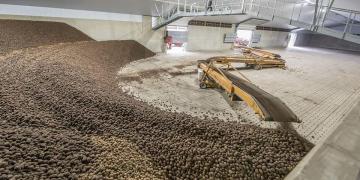Europa: The humble European potato - Genome study reveals history
Research has shown that the potato was introduced to Europe in the 1600s—the first-known plantings were in Spain. The history of the potato in Europe after introduction has not been well studied, however, until now.

In this new effort, the researchers sequenced several varieties of potato to learn more about how the modern European potato came to exist.
A team of researchers from Germany, Peru, the U.K. and Spain has sequenced a large number of potato varieties to learn more about the history of the modern European potato. In their paper published in the journal Nature Ecology and Evolution, the group describes their study of the history of the potato and what they found.
Prior studies showed that the potatoes that first made their way to Europe came from somewhere in the Andes mountains, near the equator. Because of the difference in day length, this suggests that some adaptation must have occurred to allow the potato to survive in Europe. Also, potato plants that grow in the Andes are able to produce potatoes all year long, whereas in Europe, potatoes grow in the spring, summer and fall, and are harvested before winter. To learn more about the genetic adaptions the plants underwent, the researchers obtained 88 samples of modern potatoes and specimens saved during the years 1660 to 1896. All of the samples were then sequenced.
The researchers found that the potatoes in Europe were originally nearly identical to those in the Andes. But over time, genetic changes crept in—a variant of the gene CDF1 appeared, for example, a change that allowed the potato to adapt to the European summer. Potatoes native to Chile have a similar adaptation, which quite naturally led to questions about whether potatoes from that region might have been imported. Further testing showed differences in the variants indicating that they developed independently.
The researchers also found evidence of other changes that occurred to European potatoes in the mid-1800s. They suspect this occurred as farmers began breeding them with South American varieties to combat the blight that led to the potato famine. They also found signs of interbreeding during the 20th century as farmers once again tried to make their crops more resistant to diseases.
Source: phys.org
Fuente: https://www.freshplaza.com/article/9120788/the-humble-european-potato-genome-study-reveals-history/




